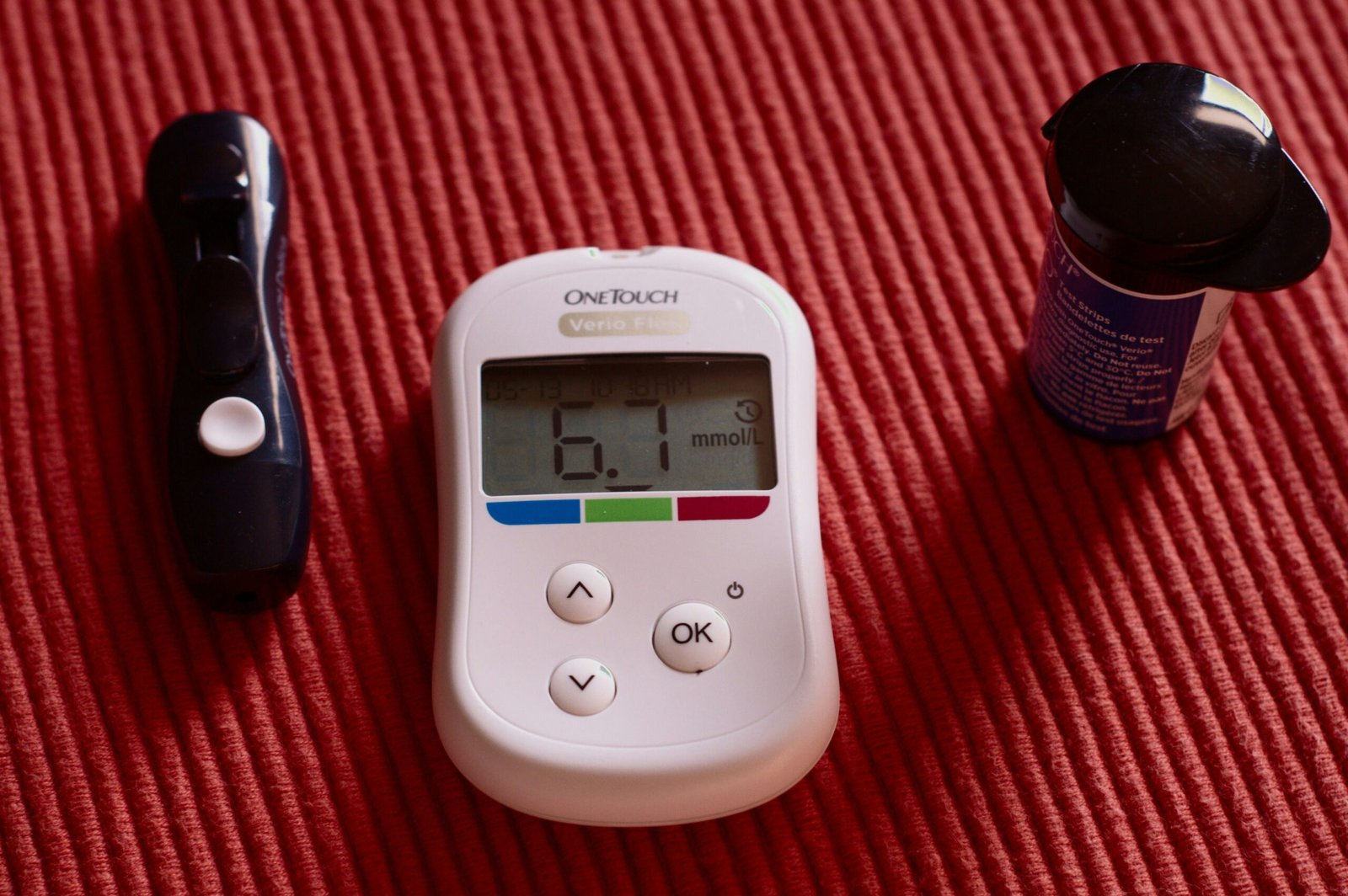Table of Contents
Sugar is one of the primary factors affecting blood glucose levels, making its consumption a critical issue for diabetics and pre-diabetics. While it is a common part of the modern diet, excessive sugar intake can have serious consequences for those with impaired glucose metabolism.
Understanding how sugar affects the body, what types to avoid, and how to make healthier choices is essential for diabetes management and long-term health. This article explores the effects of sugar on diabetics, the different types of sugars, and practical strategies to reduce sugar intake without sacrificing flavor.
How Sugar Affects the Body of Diabetics
For individuals with healthy insulin function, sugar is quickly absorbed into the bloodstream and transported into cells for energy. However, in diabetics, this process is impaired due to insulin resistance or lack of insulin production. As a result, sugar remains in the blood for longer periods, leading to high blood glucose levels (hyperglycemia).
Short-Term Effects of Sugar on Diabetics
- Rapid blood sugar spikes after consuming high-sugar foods
- Increased thirst and frequent urination due to excess glucose in the bloodstream
- Fatigue and brain fog as the body struggles to use glucose efficiently
- Increased hunger and cravings due to unstable blood sugar levels
Long-Term Effects of Excessive Sugar Intake
- Nerve damage (diabetic neuropathy), leading to pain and tingling in extremities
- Heart disease, as excess sugar contributes to high blood pressure and cholesterol imbalances
- Kidney damage, as the kidneys work harder to filter excess glucose
- Eye problems (diabetic retinopathy), which can lead to vision loss
- Increased risk of infections, as high blood sugar weakens the immune system
These effects highlight the importance of limiting sugar intake to maintain stable glucose levels and prevent diabetes-related complications.
Different Types of Sugar: Which Are the Most Harmful?
Not all sugars are the same. Some occur naturally in whole foods, while others are added to processed products to enhance flavor and shelf life. Understanding the differences can help diabetics make healthier choices.
1. Natural Sugars (Found in Whole Foods)
- Fructose: Found in fruits, but paired with fiber, which slows absorption.
- Lactose: The natural sugar in dairy, which is digested slowly.
Best choices: Whole fruits (in moderation), plain yogurt, and unsweetened dairy products.
2. Refined Sugars (Highly Processed and Fast-Digesting)
- Table sugar (sucrose): Found in sodas, desserts, and processed foods.
- High-fructose corn syrup (HFCS): A common sweetener in packaged foods and soft drinks.
Worst choices: Candy, pastries, sugary cereals, flavored yogurts, and sweetened beverages.
3. Artificial Sweeteners (Sugar Substitutes)
- Aspartame, saccharin, and sucralose: Common in diet sodas and sugar-free products.
- Stevia and monk fruit: Natural alternatives with minimal impact on blood sugar.
While artificial sweeteners may not raise blood sugar directly, some studies suggest they can alter gut bacteria and increase cravings for sweets. Natural alternatives like stevia and monk fruit are better options.
How to Reduce Sugar Intake Without Sacrificing Flavor
Eliminating added sugars does not mean giving up delicious foods. Here are practical ways to cut sugar while maintaining a satisfying diet.
1. Choose Whole Foods Over Processed Foods
- Replace flavored yogurts with plain Greek yogurt and add fresh berries.
- Choose homemade smoothies instead of store-bought ones with added sugars.
- Snack on nuts and seeds rather than candy or granola bars.
2. Read Food Labels Carefully
Many processed foods contain hidden sugars under different names, including:
- Dextrose, maltose, cane juice, agave nectar, molasses, and malt syrup.
Tip: Look for products with less than 5 grams of added sugar per serving.
3. Use Natural Sweeteners in Moderation
Instead of refined sugar, opt for:
- Cinnamon: Enhances natural sweetness without raising blood sugar.
- Vanilla extract: Adds flavor to recipes with no added sugar.
- Stevia or monk fruit: Natural, non-caloric sweeteners that do not impact glucose.
4. Be Mindful of Liquid Sugars
Sugary drinks contribute to rapid blood sugar spikes since they lack fiber and protein to slow digestion.
Healthier alternatives:
- Water infused with lemon or mint
- Unsweetened herbal teas
- Sparkling water with a splash of citrus juice
5. Prioritize Protein and Healthy Fats
Balancing meals with protein, fiber, and healthy fats helps slow sugar absorption and prevent blood sugar fluctuations.
Good sources include:
- Avocados, nuts, and olive oil (healthy fats)
- Eggs, fish, and lean meats (protein)
- Leafy greens and legumes (fiber)
How Much Sugar Is Safe for Diabetics?
The American Heart Association (AHA) recommends:
- Men: No more than 36 grams (9 teaspoons) of added sugar per day.
- Women: No more than 25 grams (6 teaspoons) per day.
For diabetics, keeping added sugar intake as low as possible is ideal. Replacing high-sugar foods with whole, nutrient-dense options can help maintain stable blood glucose levels.
Final Thoughts on Sugar and Diabetes
While sugar is a natural part of many foods, excessive consumption can worsen insulin resistance and increase diabetes complications. Making informed choices about sugar intake can improve blood sugar control, energy levels, and long-term health.
By focusing on whole foods, reading labels, and using natural alternatives, diabetics can enjoy a satisfying diet while keeping blood glucose levels stable.
Scientific References
- Lustig, R. H., Schmidt, L. A., & Brindis, C. D. (2012). Public health: The toxic truth about sugar. Nature, 482(7383), 27-29.
- Malik, V. S., Popkin, B. M., Bray, G. A., Després, J. P., Willett, W. C., & Hu, F. B. (2010). Sugar-sweetened beverages and risk of metabolic syndrome and type 2 diabetes. Diabetes Care, 33(11), 2477-2483.
- Stanhope, K. L. (2016). Sugar consumption, metabolic disease and obesity: The state of the controversy. Critical Reviews in Clinical Laboratory Sciences, 53(1), 52-67.
- Rippe, J. M., & Angelopoulos, T. J. (2016). Relationship between added sugars consumption and chronic disease risk factors. Nutrients, 8(11), 697.


